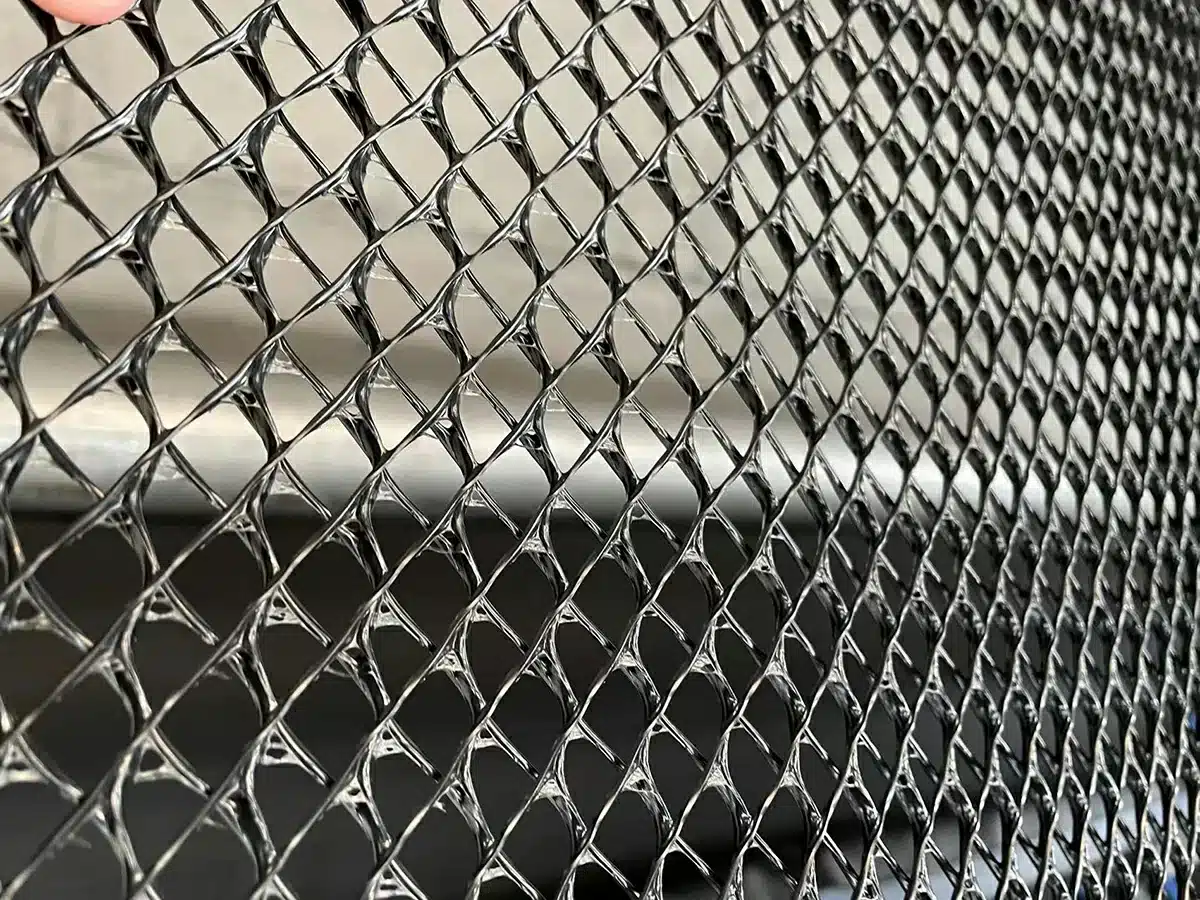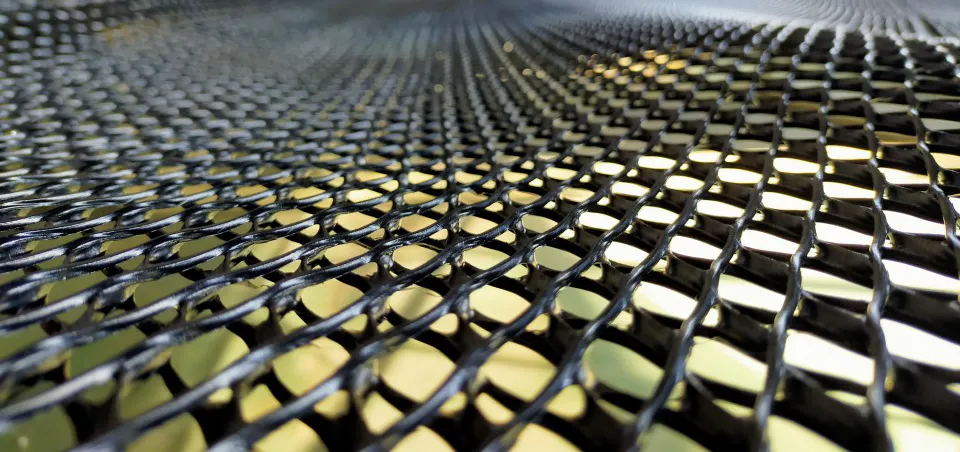Application of geotextile fabrics in slope strengthening: geomesh.

Due to their inclination, slopes must be strengthened and stabilized to prevent debris from falling, or even their collapse.
For that purpose, we can use geosynthetic fabrics that shall not only strengthen the slope but also contribute to developing a vegetation cover. However, not all types of geosynthetic fabrics can be applied in slope-strengthening projects. For that reason, this article has been created to review the advantages of using mesh for these purposes.
APPLICATION OF GEO MESH IN SLOPE STRENGTHENING
Geomesh fabrics are the most efficient solution to prevent slope erosion and other issues that may arise. All biaxial strengthening geo mesh membranes for use in slopes feature a rectangular mesh opening. These are manufactured with high elastic modulus and low creep polyester that provide the genomes with highly resistant features. In addition, the mesh is protected from mechanical damage by a polymer coating.
Geomesh will prevent the slope’s erosion while promoting the creation of a vegetation cover by acting like a filter, i.e., they allow water to flow through while retaining the soil’s superficial layer fines.

WHAT TYPE OF GEOMESH IS THE MOST ADEQUATE FOR SLOPE STRENGTHENING?
ALVAGRID PET
Specifically designed for soil stabilisation and strengthening. This geomesh is manufactured from high elastic modulus and low creep polyester that confer the geomesh with its highly resistant features.
ALVAGRID PET is a high tenacity polyester geomesh suitable for application in several types of projects, including slope strengthening.
Click here for further information regarding this geomesh fabric.
Whether using geomesh or geogrid fabrics, slope strengthening must be approached from a prevention point of view and not as a means of correcting existing issues, as this may result in additional erosion or collapse.
